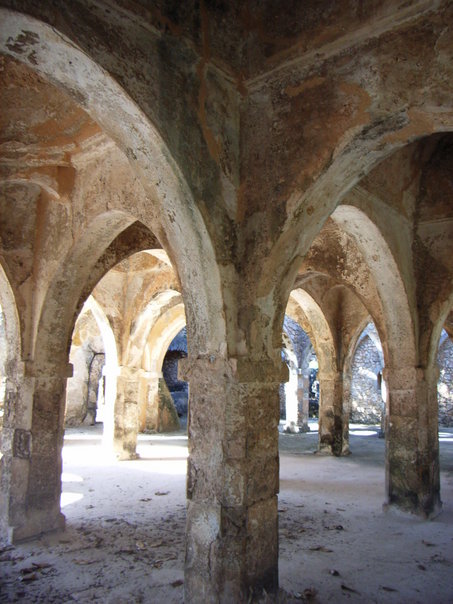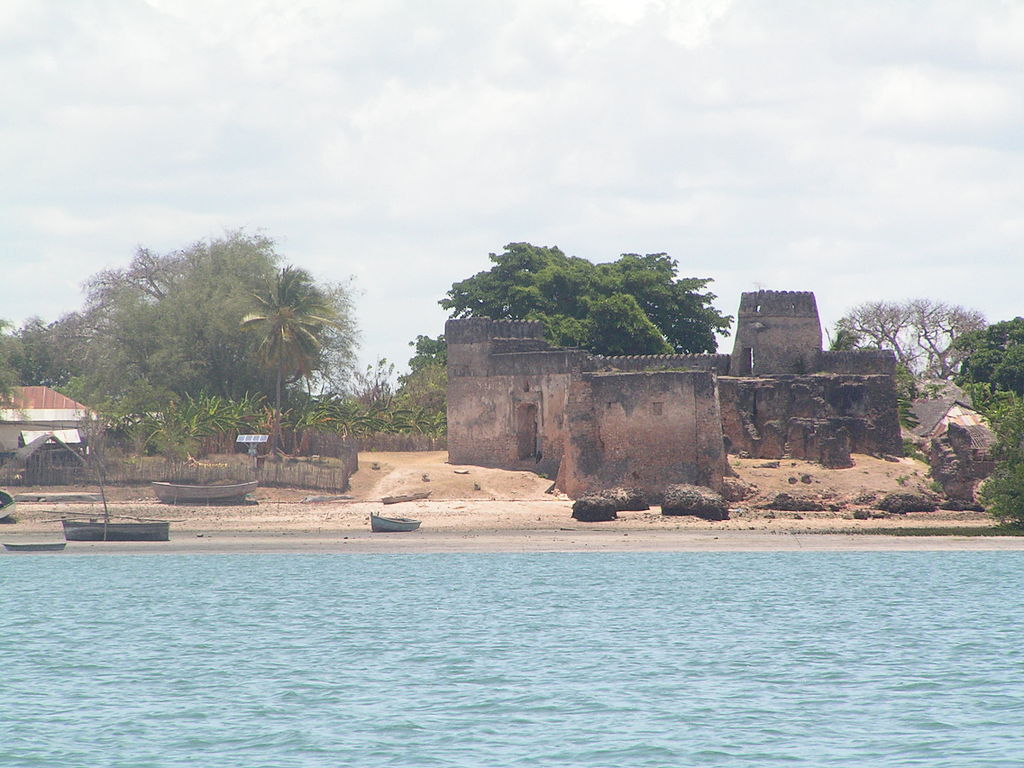Kilwa Kisiwani
- Kilwa Kisiwani is an archaeological city-state located on an Indian Ocean island off the southern coast of present-day Tanzania in eastern Africa. It was occupied from at least the 8th century CE and later became the center of the Kilwa Sultanate, a medieval sultanate whose authority at its height in the 13th-15th centuries CE stretched the entire length of the Swahili Coast. From this period date the construction of the Palace of Husuni Kubwa and a significant extension to the Great Mosque of Kilwa, which was made of coral stones—the largest mosque of its kind. Kilwa Kisiwani has been designated by UNESCO as a World Heritage Site.
- Trade connections with the Arabian Peninsula as well as India and China influenced the growth and development of Kilwa, and, though there are Islamic words and customs that have been adapted to the culture, the origins are African.
- Among Kilwa's exports were spices, tortoiseshell, coconut oil, ivory, and aromatic gums, as well as gold. For approximately 500 years, Kilwa was minting coins. This lasted from about A.D 1100-1600 and the coins have been found across the region, including Great Zimbabwe.
- Evidence of growth in wealth can be seen with the appearance of stone buildings around the 13th century CE, before which all of the buildings were wattle-and-daub. The wealthy enjoyed indoor plumbing in their stone homes and the poor lived in mud huts with thatched roofs. The scholar Ibn Battuta recorded his visit to the city around 1331, and commented favorably on the generosity, humility, and religion of its ruler, Sultan al-Hasan ibn Sulaiman. Ibn Battuta also describes how the sultan would go into the interior and raid the people taking slaves and other forms of wealth.
- In the early 16th century the Portuguese took control of the island after besieging it. It remained in Portuguese hands until 1512.
Read more: https://en.wikipedia.org/wiki/Kilwa_Kisiwani
Ancient African coins that could change history of Australia
With its glittering wealth, busy harbor and coral stone buildings, the island of Kilwa rose to become the premier commercial post of coastal East Africa around the 1300s, controlling much of the Indian Ocean trade with the continent's hinterland. Situated in present-day southern Tanzania, during its heyday Kilwa hosted traders from as far away as China, who would exchange gold, ivory and iron from southern Africa's interior for Arabian pottery and Indian textiles as well as perfumes, porcelains and spices from the Far East. But the Kilwa sultanate's heyday came to a crashing end in the early 1500s with the arrival of the Portuguese who sacked the city in their bid to dominate the trade routes between eastern Africa and India.
Ruins of Kilwa Kisiwani and Ruins of Songo Mnara
The remains of two great East African ports admired by early European explorers are situated on two small islands near the coast. From the 13th to the 16th century, the merchants of Kilwa dealt in gold, silver, pearls, perfumes, Arabian crockery, Persian earthenware and Chinese porcelain; much of the trade in the Indian Ocean thus passed through their hands.
Kilwa Kisiwani
A conversation with Stephen Battle, World Monuments Fund and Steven Zucker, Smarthistory about the history and architecture of Kilwa Kisiwani, Tanzania. Created by Beth Harris and Steven Zucker.
This page uses materials from Wikipedia available in the references. It is released under the Creative Commons Attribution-Share-Alike License 3.0.
References

